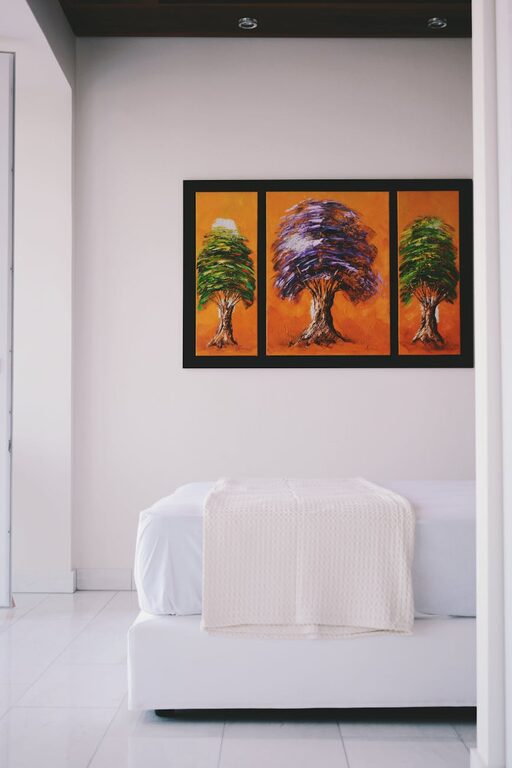Creating a peaceful environment at home can often start with one simple element: color. The hues you choose for your walls, furniture, and accents can dramatically influence the mood and atmosphere of your living space. Calm colors, in particular, promote relaxation, reduce stress, and help you feel comfortable and refreshed. If you’re wondering how to find those serene shades for your home, you’ve come to the right place.
In this post, we’ll explore practical tips for choosing calm colors to transform your home into a soothing sanctuary.
Why Choosing Calm Colors Matters
Colors affect us more than we often realize. Bright, intense colors like red and neon tones can energize or sometimes overwhelm us, while softer, muted colors tend to create restful, welcoming atmospheres. Calm colors work by:
– Reducing stress and anxiety
– Encouraging relaxation and restful sleep
– Enhancing focus and clarity
– Making spaces feel more open and airy
Understanding how color impacts your mood helps you pick the right shades for each room’s purpose.
Popular Calm Color Choices
Calm colors generally lean towards cool and muted tones, but warm neutrals can also feel soothing.
Examples of Calm Colors
– Soft blues: Think sky blue or pale teal; these colors evoke peace and stability.
– Gentle greens: Sage, mint, or olive bring nature’s tranquility indoors.
– Warm neutrals: Beige, taupe, or warm gray provide cozy, understated backdrops.
– Lavenders and mauves: Subtle purples can create an elegant, restful vibe.
– Dusty pinks: Soft pinks with muted undertones add warmth without overstimulation.
Tips to Choose the Right Calm Colors
1. Consider the Room’s Purpose
The function of the room influences which calm colors work best.
– Bedroom: Aim for soft blues, gentle greens, or muted lavenders to foster restfulness.
– Living room: Warm neutrals and soft greens create inviting, peaceful spaces.
– Bathroom: Light blues and pale grays enhance cleanliness and serenity.
– Home office: Cool tones like muted blues or greens improve concentration and calm.
2. Test Colors with Lighting
Natural and artificial light drastically affect how colors appear.
– Observe how paint samples look at different times of day.
– Use larger swatches on your walls before deciding.
– Remember that north-facing rooms generally have cooler light, making colors look bluer, while south-facing rooms have warmer tones.
3. Use a Color Palette
Combining calm colors in a cohesive palette helps maintain harmony.
– Choose one dominant calm color for walls.
– Add complementary shades for furniture, curtains, and décor.
– Use neutral accents to balance the palette and prevent overwhelm.
4. Choose Matte or Satin Finishes
Flat or satin paint finishes tend to create a soft, non-reflective look that enhances calmness compared to glossy options.
5. Incorporate Natural Textures
Pair your calm color choices with natural materials like wood, linen, cotton, or stone to amplify the serene ambiance.
How to Avoid Common Mistakes
Don’t Rely Only on White
While white can be calming, an all-white space may feel too sterile or cold. Introducing subtle colors adds depth and warmth.
Avoid Overly Cool Shades
Extremely cool blues or grays can sometimes feel chilly if not warmed up with complementary tones or textures.
Don’t Forget Accent Colors
Adding muted accent colors—even in soft blush, mauve, or sage—breaks monotony and adds interest without compromising calmness.
Creative Ideas to Use Calm Colors
– Paint an accent wall in a gentle green to create a focal point.
– Use pastel cushions and throws on a neutral sofa.
– Select calming artwork that features soft landscapes or abstract designs.
– Bring in plants for a natural pop of green that enhances the color theme.
Final Thoughts
Choosing calm colors for your home is a wonderful way to embrace peace and create comforting spaces. By focusing on the room’s function, testing colors in your lighting, and assembling a balanced palette, you’ll craft an environment that welcomes relaxation every day.
Remember, your home reflects your personality, so take your time experimenting with calm colors until you find the perfect blend that feels just right for you. With these tips in hand, you’re well on your way to a more tranquil living space!

